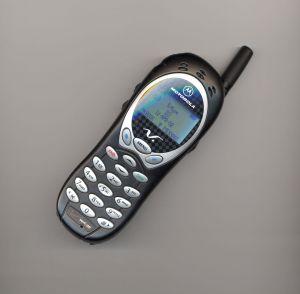
Technology advances every day and that is why the history of cell phones -- although only about 20 years long for the mainstream consumer -- has actually gone through quite a few changes. In many ways, you could say that cell phone technology is advancing just as quickly (if not faster) than the home computer. Do you even remember DOS? Can you recall having a mobile phone without a color screen?
History of Cell Phones
While exploring the history of cell phones, you'll find that many of the major players have remained unchanged. Perhaps the biggest change that you will see among mobile phones is a change in size. Early phones were substantially larger, thicker and heavier than any Motorola RAZR or Sony W580i. Let's have a more detailed look at the evolution of cell phones.
Early Mobile Phones
Most of the first commercially available cell phones came from Motorola, the same people responsible for modern day RAZR, SLVR, PEBL, and Q models, for example. In the beginning, many mobile phones weren't exactly portable, because they had to be attached to a vehicle to work. Hence, they were referred to as car phones.
In 1983, the Motorola DynaTAC 8000X was introduced to the United States, representing the first handheld mobile phone. Transmission was done through an analog system and the phone, surprisingly enough, did nothing other than make phone calls. There were no text messages, organizers, or other secondary functions. You may recognize one of these early Motorola phones from the popular teen television show Saved by the Bell. For this reason, these handsets are sometimes called "The Zack Morris".
In the years that followed, Motorola managed to shrink the size of their phones and they eventually introduced the flip phone form factor. The battery was much larger than modern devices, but most handhelds of the time needed to be charged on a nightly basis. This eventually shrunk down to the size of the Motorola MicroTAC Elite and Motorola StarTAC, both very popular phones.
Second Generation Handsets
As second generation mobile phone technology was developed -- GSM and CDMA are the most widely used today -- the actual handsets quickly advanced in terms of functionality as well. It was also during this time that transmission switched from analog to digital. The first digital cellular call was made in the United States in 1990. The first GSM network was opened in Finland in 1991. Today, we have networks like T-Mobile, AT&T, and Rogers Wireless.
Cell phones quickly shrank in size, ditching the "bricks" of old for much more compact form factors. More advanced batteries led to better efficiency. By and large, most North Americans are currently using second-generation cell phones or perhaps handsets from what has been called 2.5G. This encompasses technology like EDGE, the "high speed" cellular technology used in the Apple iPhone.
New Cell Phone Features
The most current cell phone features include:
- Camera phones
- Integrated MP3 player
- Mobile Web surfing
- Java applications
- Push to Talk (PTT)
- Bluetooth technology
- Memory card expansion
Many of these features are available on current phones. The megapixel count on camera phones is increasing, mobile web surfing is getting more advanced, and user interfaces are getting ever more intuitive.
The Proliferation of 3G
Although North America was a little late to the party, 3G mobile phone technology has finally made its way to these shores. In essence, 3G increases the speed of wireless data transfers, opening the doors for all sorts of advanced functionality, including mobile TV. In regions where 3G has been around for a while -- like Japan -- you'll notice that mobile phone lifestyle is much more encompassing, including television, radio, "true" web surfing, and much more.
The history of cell phones is far from over. It's only beginning.







